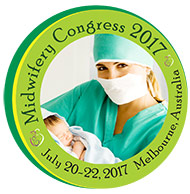4th World Congress on Midwifery and Women’s Health

Tomaz Crochemore
Physician, Israelita Albert Einstein Hospital, Brazil
Title: Thromboelastometry-guided hemostatic therapy:. An efficacious approach to manage bleeding risk in acute fatty liver of pregnancy
Biography
Biography: Tomaz Crochemore
Abstract
Introduction: Acute fatty liver of pregnancy (AFLP) is a rare but life-threatening disease. AFLP is characterized by liver failure with different degrees of coagulopathy. Outcome and survival can be dramatically improved with prompt recognition and treatment. Thromboelastometry has been considered a point of care for the management of bleeding patients. It could, therefore, be an alternative tool to treat the complex cases of AFLP involving liver failure and coagulopathy. Through this study, we present our successful experience of an AFLP case that was submitted to an emergency cesarean section in which blood transfusion was guided by thromboelastometry.
Case presentation: We report the case of a previously healthy 28-year-old woman, Afro-Brazilian, in her first pregnancy with no medical records until the 36th pregnancy week. She presented to our emergency department with an acute onset of abdominal pain, jaundice, nausea and vomiting. The laboratory examinations revealed metabolic acidosis, acute kidney injury (serum creatinine 3.4mg/dL), platelets 97 x 103/mm3, serum fibrinogen 98mg/dL and increased international nationalized ratio (INR 6.9) without acute bleeding. An emergency cesarean section was indicated. Based on the results of the thromboelastometric tests EXTEM and FIBTEM, prothrombin complex concentrate and fibrinogen concentrate were administered at the beginning of the cesarean section, which succeeded with no major bleeding and without need of further transfusion.
Conclusions:Thromboelastometry may be considered a useful, feasible and safe tool to monitor and manage coagulopathy in obstetric patients with acute fatty liver of pregnancy, with the potential advantage of helping avoid unnecessary transfusion in such patients.

